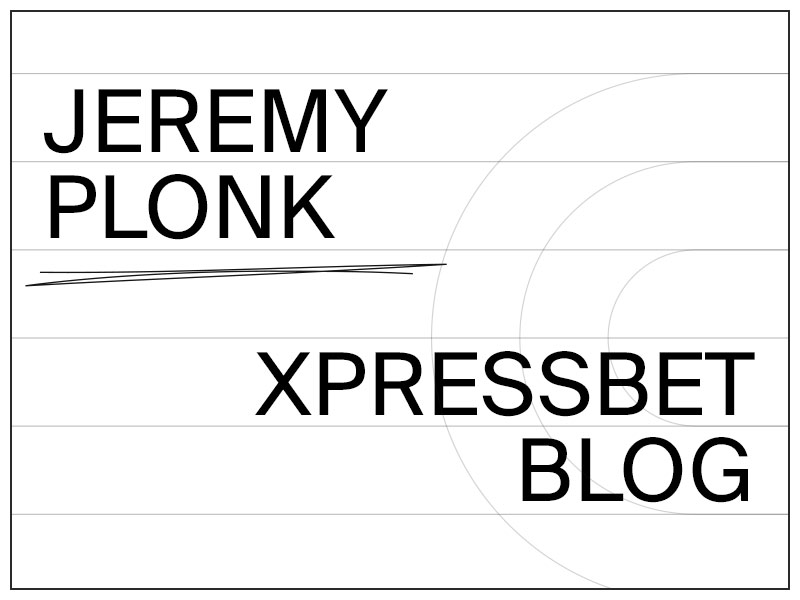by Jeremy Plonk
April 19, 2021

Welcome to a continuing handicapping series for our Monday blog space, “Monday Myths.” Each week I’ll use the power of the Betmix database to take common handicapping assumptions and either support or dispel them with data. Betmix data powers the 1/ST BET app and its features like Angler and Birddog give data-minded horseplayers a treasure trove of information in which to query your own curiosities.
Assumption:
Today’s horses do better with more time between starts.
Background:
It was only 2006 when the buzz around Barbaro concerned his 5-week layoff from the Florida Derby to the Kentucky Derby. Needles was all the rage, the last horse to wear the roses off such a break in 1956. Yes, 50 years prior.
And now as we dig into another annual Kentucky Derby puzzle, we’re posed with horses off 3 weeks, 4 weeks, 5 weeks and 6 weeks. Modern trainers want more time between starts; tracks mostly have obliged by moving their schedules.
The Derby is a small sample size and not a good study, but what about everyday horses? What’s the best time between starts? Do all modern horses need more time or just the stakes performers?
Data Points:
I crunched the numbers in the Betmix database for every race since the start of the 2018 season, to look at each starter and they performed at various layoffs from 2 to 6 weeks. To be less rigid on timing, an extra day was included on each side of the layoff (2 weeks meaning 13-15 days, for instance). I studied horses at various class levels to evaluate the impact of race spacing.
//
Maiden horses off 2 weeks won 12.1% and finished in the money 38.3% with a $1 ROI of $0.68.
Maiden horses off 3 weeks won 13.1% and finished in the money 39.2% with a $1 ROI of $0.69.
Maiden horses off 4 weeks won 13.5% and finished in the money 39.0% with a $1 ROI of $0.71
Maiden horses off 5 weeks won 14.3% and finished in the money 40.0% with a $1 ROI of $0.82.
Maiden horses off 6 weeks won 13.3% and finished in the money 39.1% with a $1 ROI of $0.73
//
Claiming horses off 2 weeks won 12.9% and finished in the money 40.5% with a $1 ROI of $0.71.
Claiming horses off 3 weeks won 13.9% and finished in the money 41.2% with a $1 ROI of $0.80.
Claiming horses off 4 weeks won 13.7% and finished in the money 39.0% with a $1 ROI of $0.77.
Claiming horses off 5 weeks won 14.4% and finished in the money 40.6% with a $1 ROI of $0.76.
Claiming horses off 6 weeks won 13.8% and finished in the money 39.9% with a $1 ROI of $0.77.
//
Allowance horses off 2 weeks won 13.4% and finished in the money 41.0% with a $1 ROI of $0.73.
Allowance horses off 3 weeks won 13.7% and finished in the money 42.6% with a $1 ROI of $0.74.
Allowance horses off 4 weeks won 14.4% and finished in the money 42.5% with a $1 ROI of $0.79.
Allowance horses off 5 weeks won 13.8% and finished in the money 41.6% with a $1 ROI of $0.72.
Allowance horses off 6 weeks won 14.7% and finished in the money 40.7% with a $1 ROI of $0.81
//
Stakes horses off 2 weeks won 9.6% and finished in the money 32.9% with a $1 ROI of $0.77.
Stakes horses off 3 weeks won 12.7% and finished in the money 38.1% with a $1 ROI of $0.72.
Stakes horses off 4 weeks won 12.8% and finished in the money 39.3% with a $1 ROI of $0.73.
Stakes horses off 5 weeks won 14.1% and finished in the money 41.1% with a $1 ROI of $0.83.
Stakes horses off 6 weeks won 15.3% and finished in the money 41.5% with a $1 ROI of $0.92.
Overall Findings:
The most successful timeframe for maidens was 5 weeks in win percentage, ITM percentage and ROI. Claiming horses also won at their highest rate off of 5 weeks, but were slightly most productive overall at 3 weeks. Allowance horses were best with 6 weeks between starts in win percentage and ROI. Stakes horses saw the widest swath from 9.6 to 15.3 percent wins, each level getting better with another week of time between starts. Stakes horses maxed at 6 weeks in win percentage, ITM percentage and ROI.
Bottom line:
So, do today’s horses do better with more time between starts? The top-level stakes horses absolutely do better with 5-6 weeks between starts. The cases are a bit cloudier at the other class levels, but they, too, tilt slightly in the direction of more time between starts.
Additional Details:
You can go into Betmix and run your own queries for a deeper dive into this theory and any that you can create. For instance, how do these various layoff timeframes play out at your favorite track? Which trainers have had the most success with each race spacing? Are these timeframes impacted by age, track surface or distance?